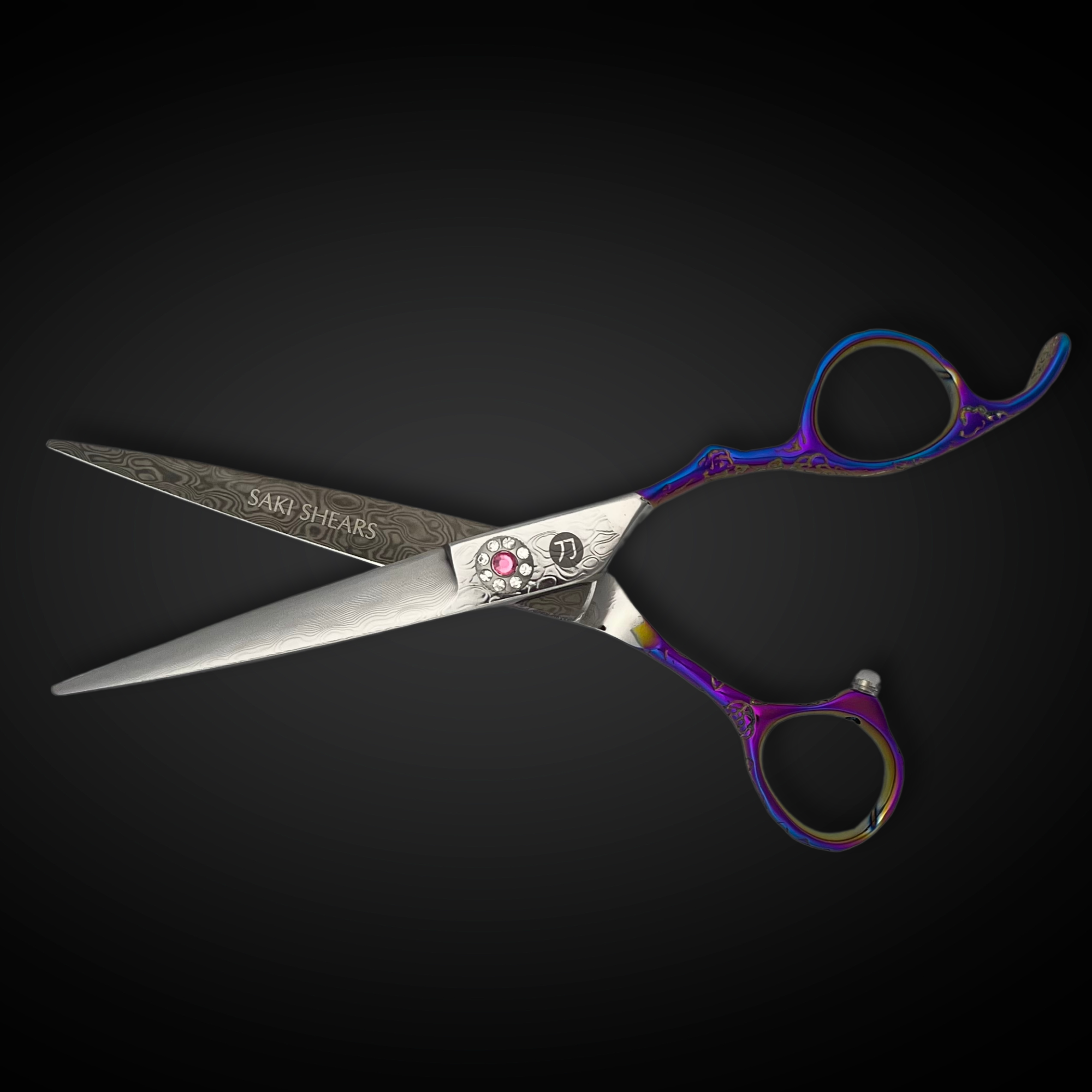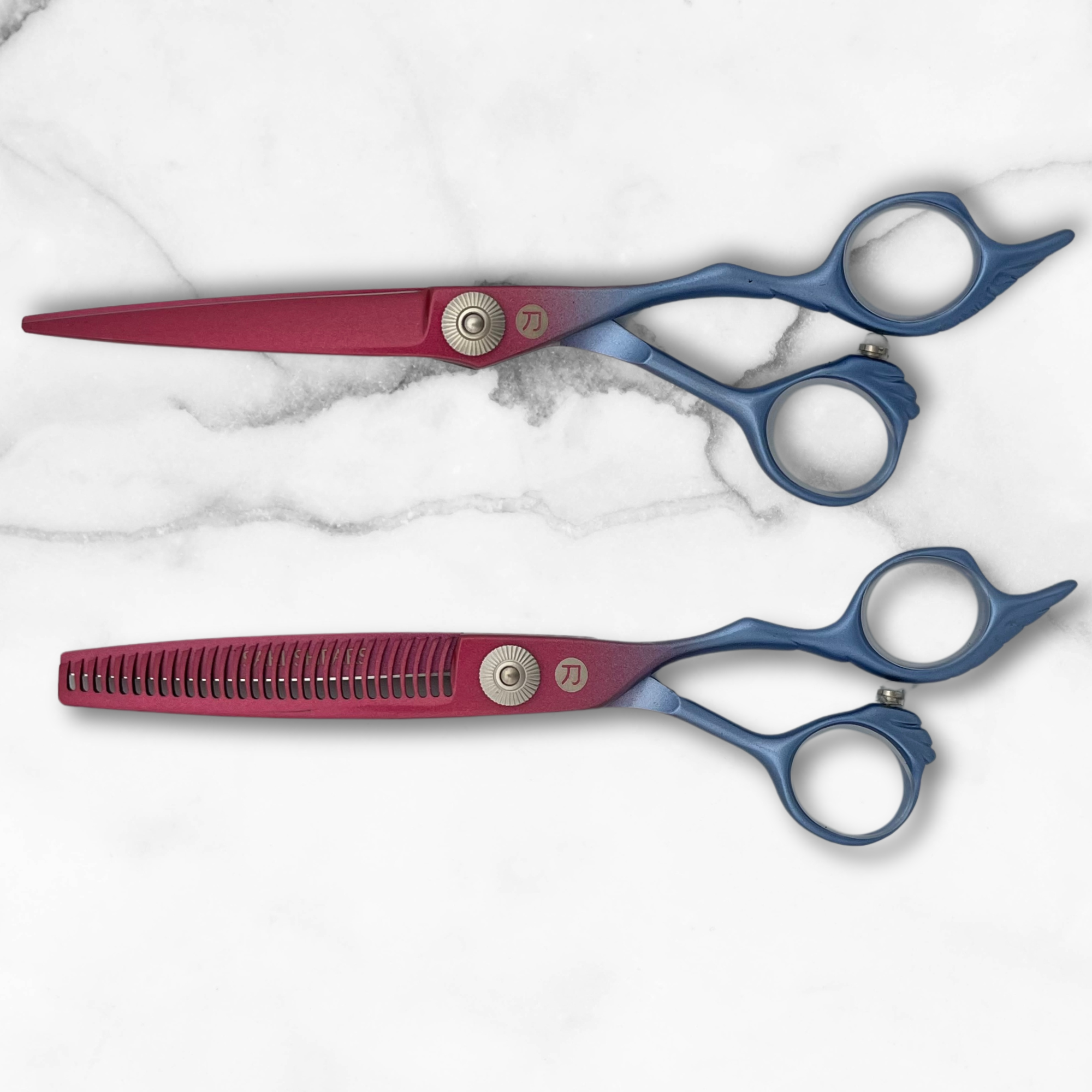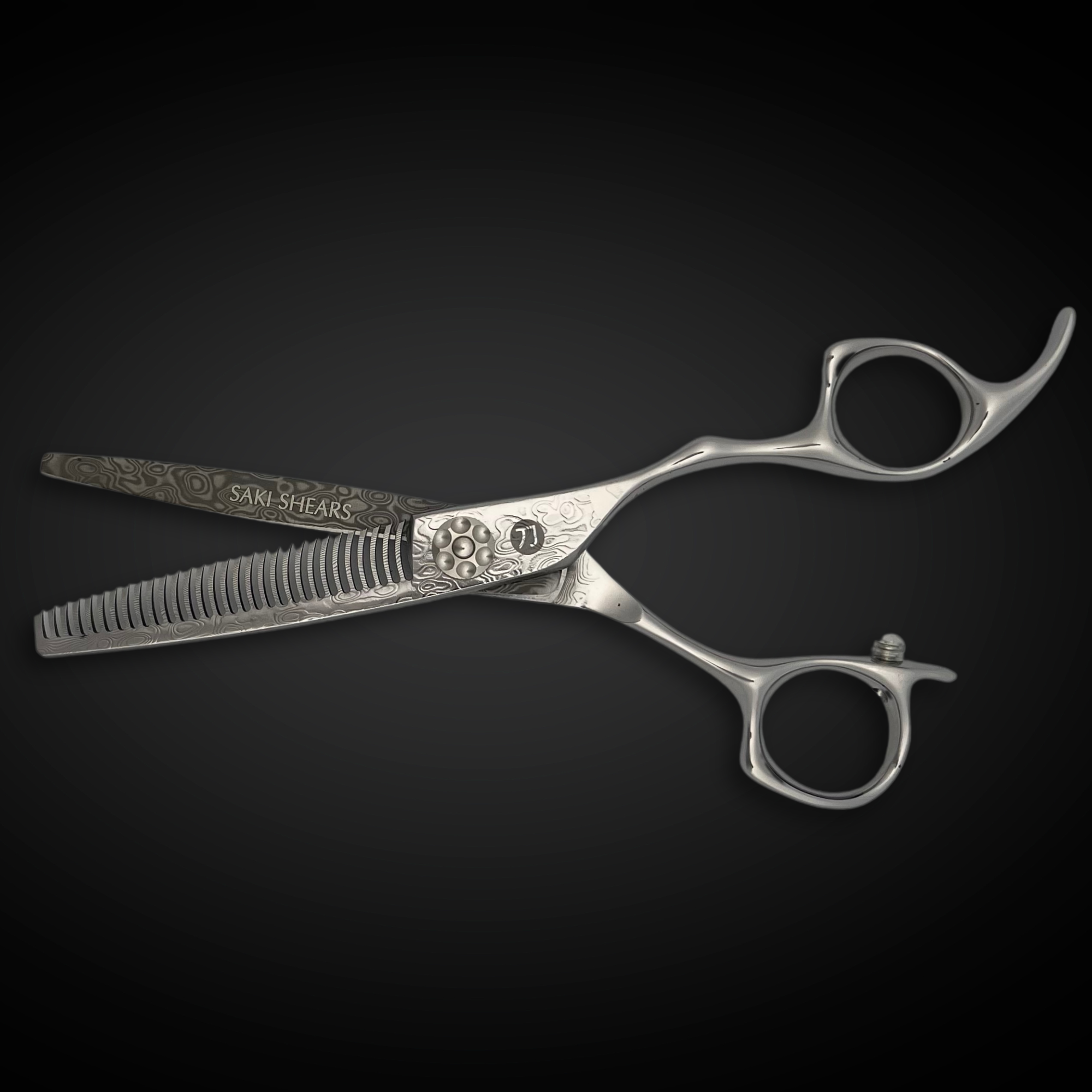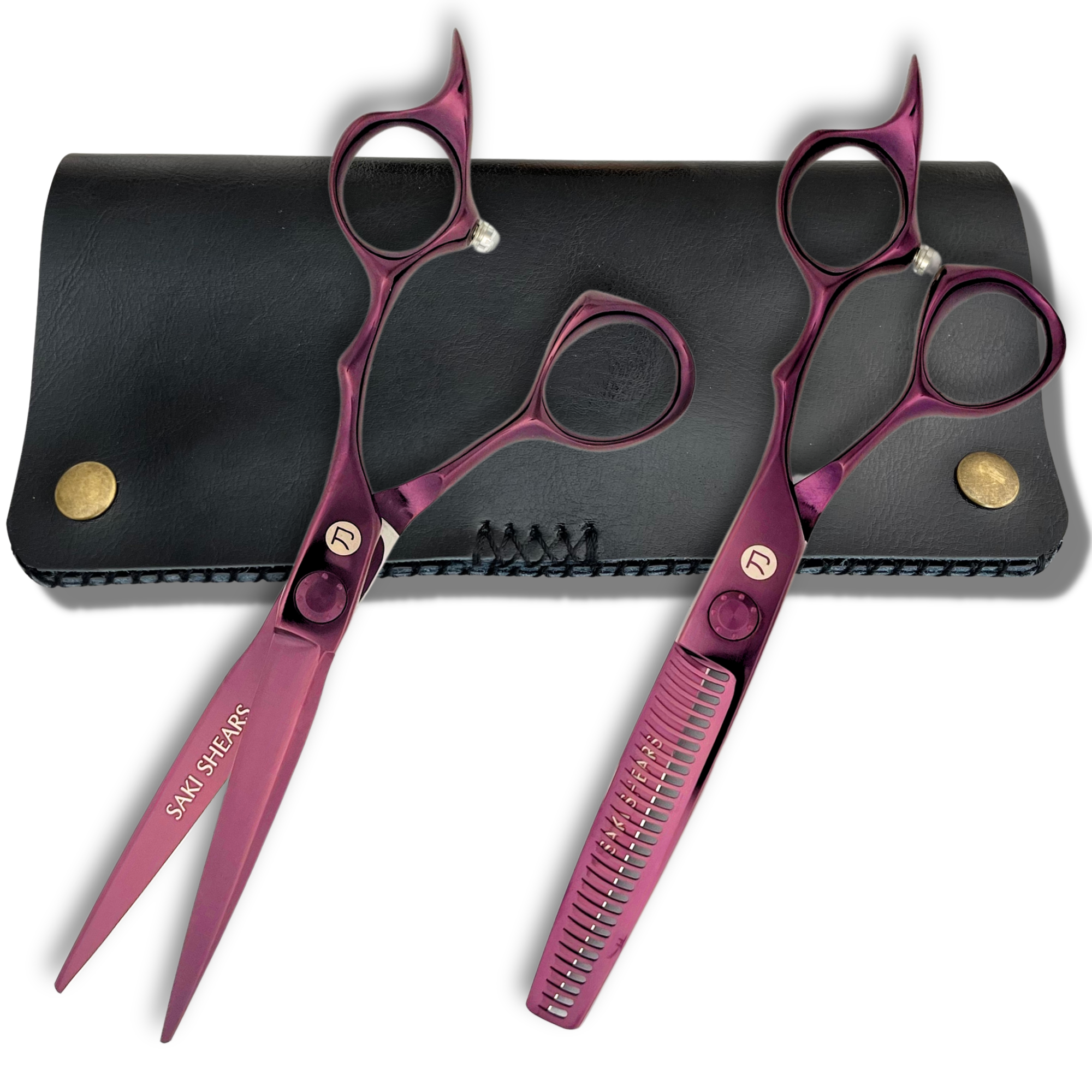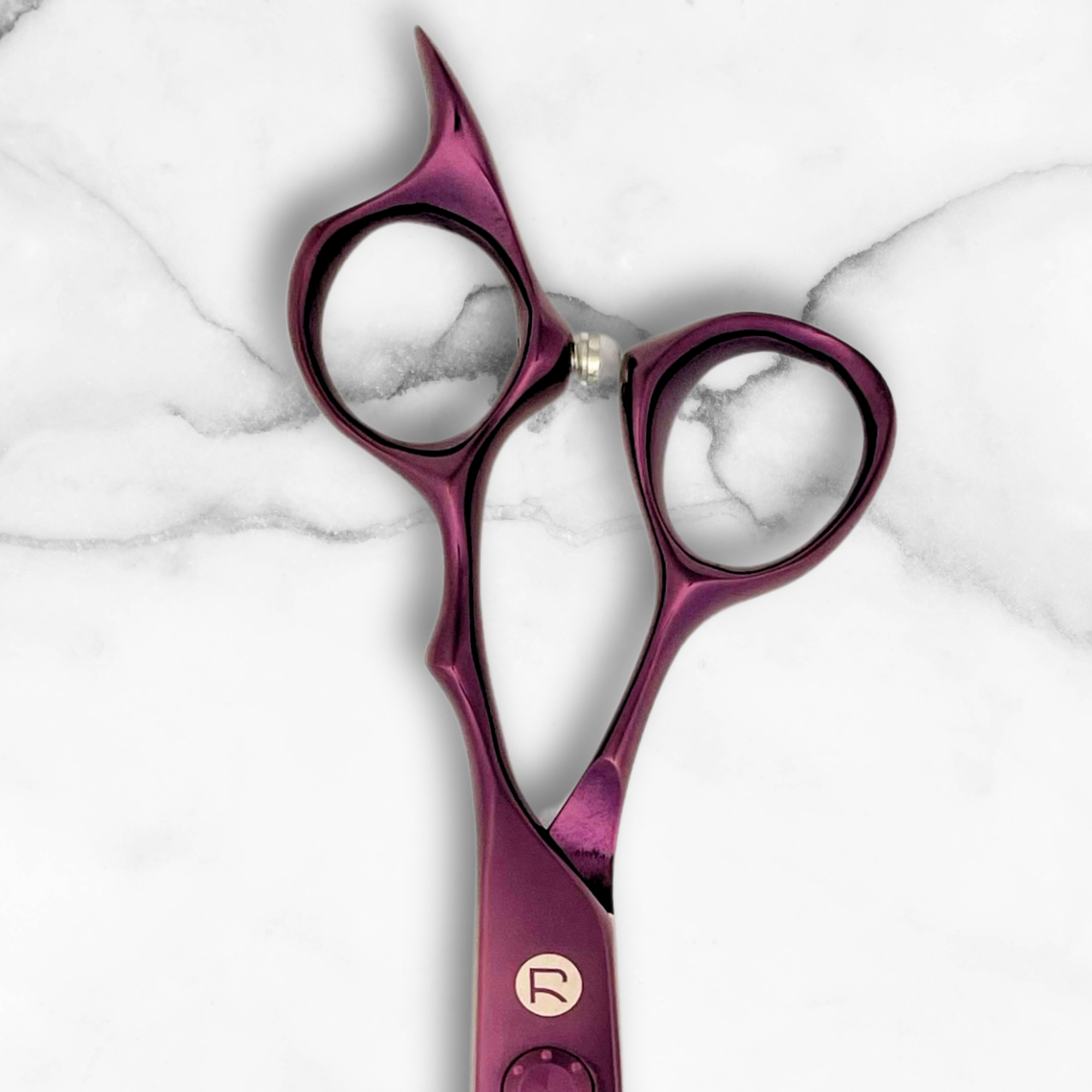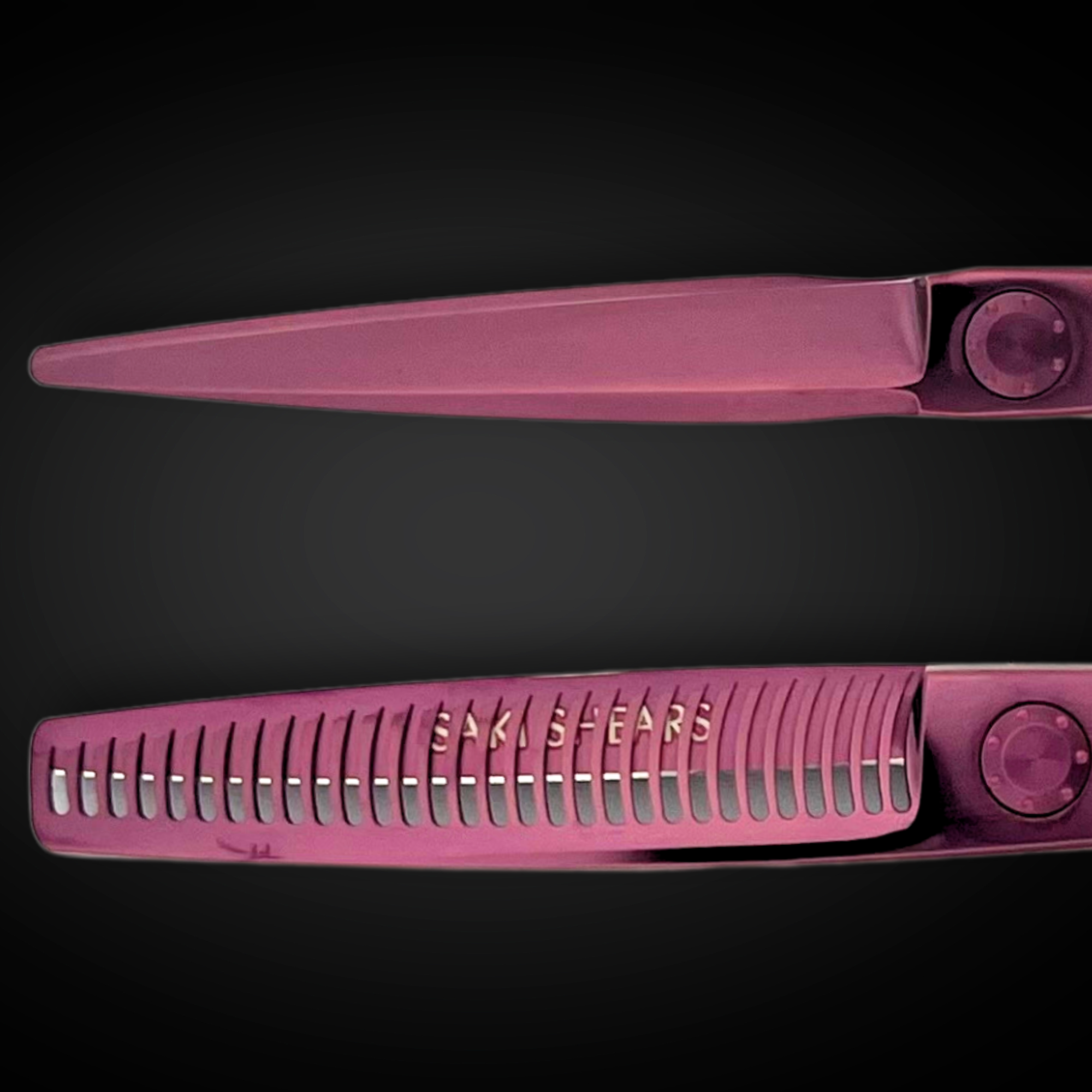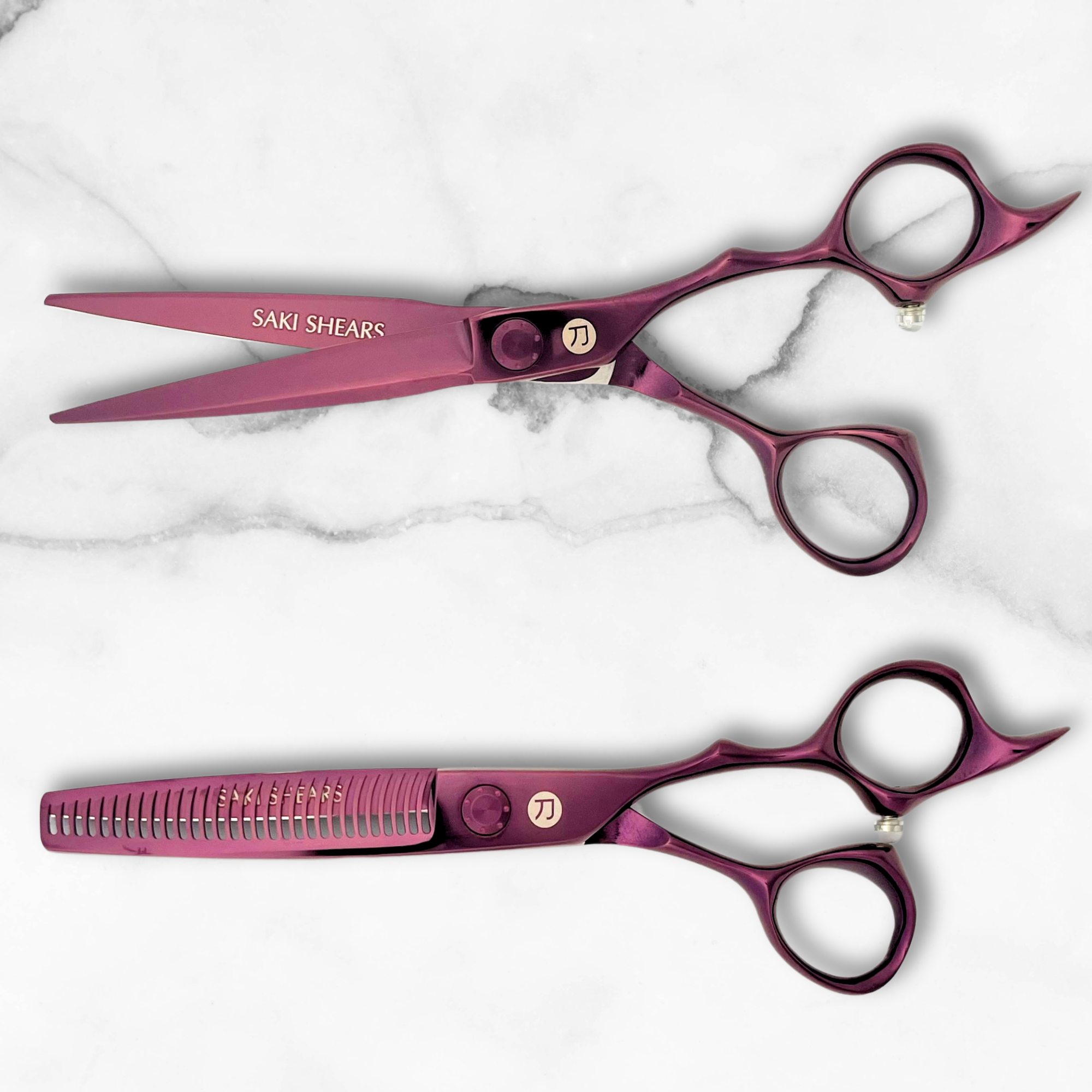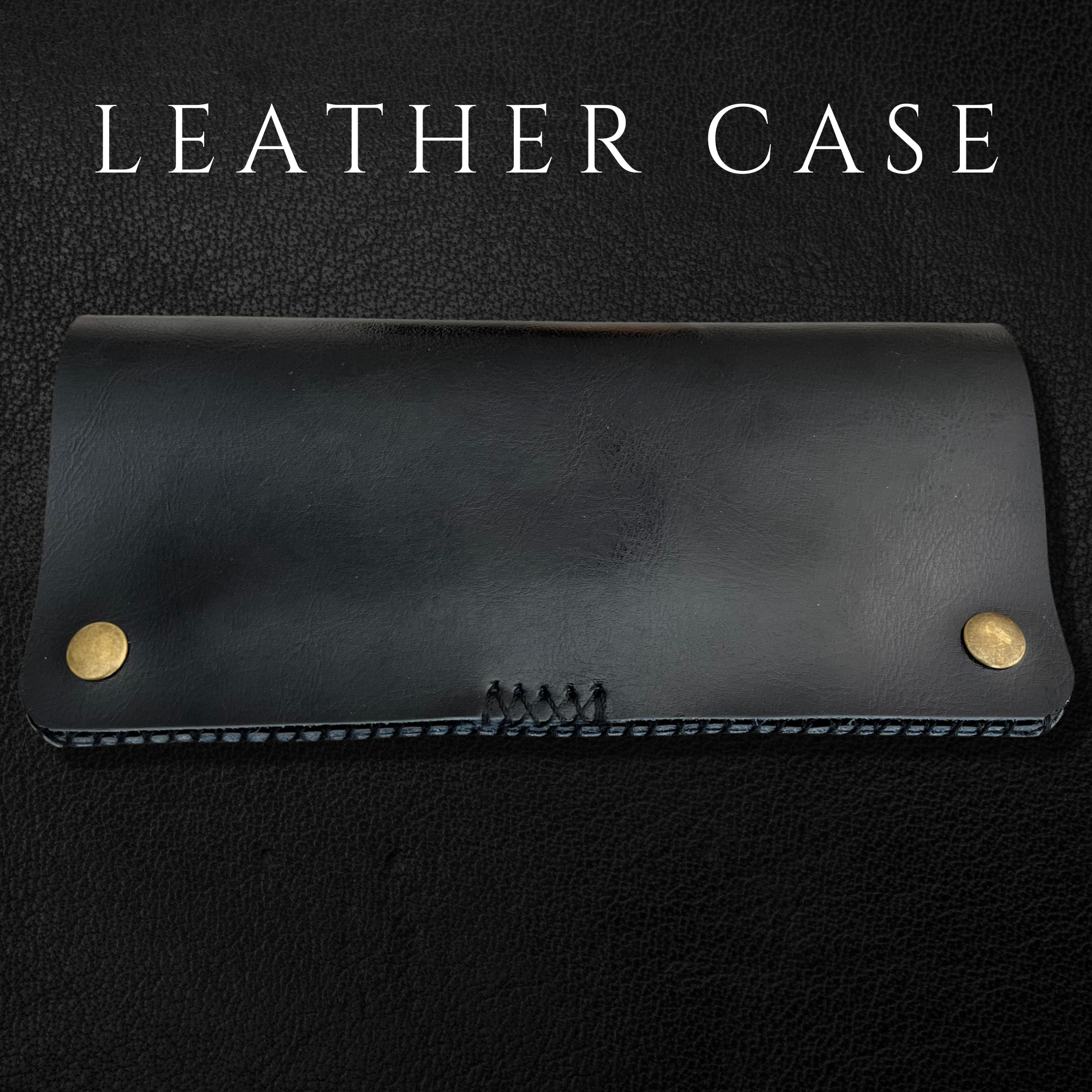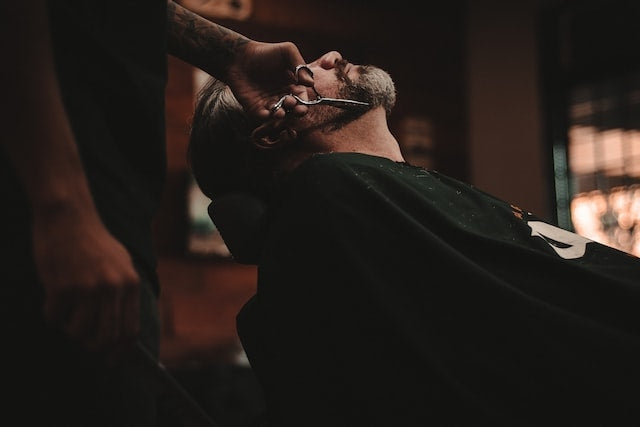Hair Shears Have Different Blade Edges Including Convex, Sword, Bevel and More
Hair shears have many types of edges. What follows is a summary of the different blade edges of hair cutting shears. The most common include bevel, convex, sword blade, K-blade, cast and forged. When shopping for hair shears you will find shears containing all of these blade edges.
Bevel: Cuts require extra energy because of the cutting edge's steep angle, which is about 35 degrees. Some edges are serrated or twisted to make up for their lack of sharpness. Blunt cutting is appropriate for this kind of edge work, but more sophisticated cutting methods are not. They typically move loudly and roughly. Every titanium pair of scissors has a beveled edge.
Convex: Japan is where the convex edge first appeared. This kind of edge is referred to as a clam shell in Japanese. This kind of edge work cuts through hair easily and smoothly because of its small, sharp edges. These edges' 45 degree angles enable precision cutting with all cutting methods. Today's high-quality shears will often feature a convex edge.
Many of the original Saki Shears scissors have a convex edge. Some of the most popular models include the Saki Katana and the Saki Kohana.

Sword Blade: There is a sword blade and a convex (or clam shell) edge in this series. The sword blade offers the scissor's blade greater strength for better cutting precision. A shear loses power as its length grows. With the sword blade, not so. Despite its length, a Sword Blade Shear's blade has a ridge that allows for forceful cuts. Make the airy, unkempt appearance that many people want. This "What you see is what you get" method of dry cutting is possible, pleasant, and enjoyable thanks to the sword blade.
The sword blade has become increasingly popular among hair stylists. Saki Shears recently introduced the Saki Precision hair cutting shear. The Saki Precision is part of our Master line of cutting shears. It is crafted from a specially formulated, high-cobalt Japanese Steel called ZA-18.

K-Blade: Convex edges of K-Bade continue to provide a pleasant, precise cutting experience. The blade's enlarged radius prevents hair from being forced into the shear, resulting in a precise, simple cut. This enables you to get the tussled look and motion that give the hair vitality. This blade design is the best option for dry/wet, slide, and stroke cutting due to its heightened sense of stability.
Forged: The strongest and most long-lasting shears are made using the forging process. A ram that can weigh up to 1000 pounds is then dropped into the heated steel that has been placed in the mold during this procedure. By compressing the metal, the molecules are forced closer together during shearing. As a result, strength and edge retention are improved.
Cast: A brittle, easily broken shear is created by the casting process. After being poured into a mold, the hot steel is cooled. The molecules split as the shear cools, creating a weak point.

